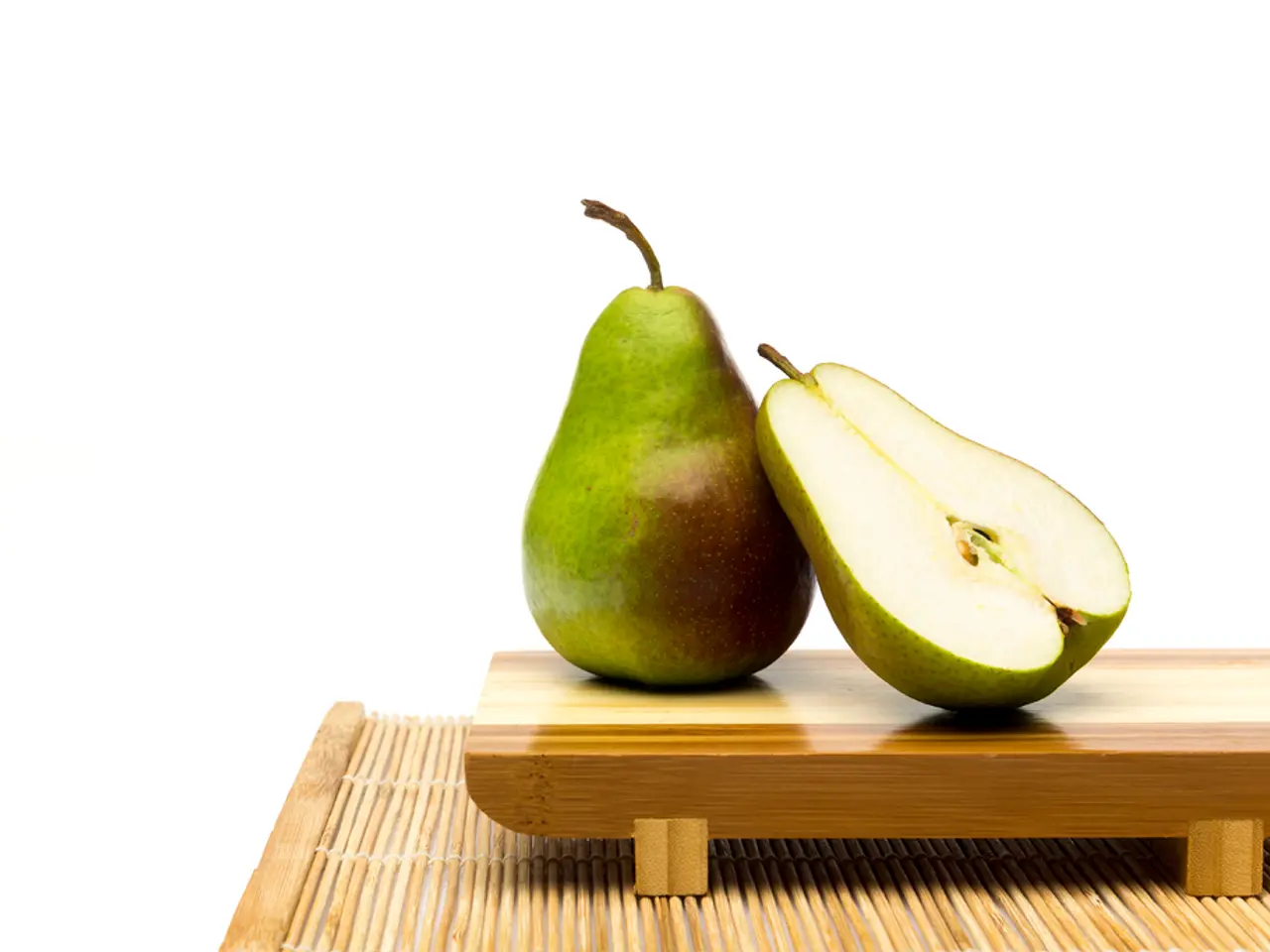Harvesting Asian Pears: Identifying the Optimal Timing for a Flawless Crop
The 20th Century pear, a classic favorite, is known for its sweet, juicy taste, yellow-green fruit, and maturity in late summer. Asian pears, another variety, share similar characteristics but also offer unique benefits, such as their rich antioxidant content that helps reduce the risk of illnesses like cancer and heart disease, and soluble fiber that aids in lowering cholesterol levels.
To ensure a bountiful harvest, it's essential to follow best practices for planting, caring for, harvesting, and storing Asian pear trees.
Planting
Choose a well-drained site with full sun for your Asian pear tree. These trees require plenty of sunlight for optimal fruit production. When planting, ensure the top of the root ball is level with or slightly above the surrounding soil to avoid planting too deep. Avoid compacting the soil around roots by tamping gently rather than stomping.
When planting potted trees, remove them gently from containers and untangle circling roots to promote outward growth. Protect young trunks from sunburn using white latex paint diluted 50/50 with water or tree guards. Build a watering basin around the root zone but slope soil away from the trunk to prevent crown rot. Use wire-mesh baskets or collars at planting to protect against pests like voles and deer if they are problematic in your area.
Caring
Water newly planted trees thoroughly (about 5 gallons initially) and maintain consistent watering, especially during dry periods, adjusting for rainfall to prevent root or crown rot. Apply 3-4 inches of compost around the base, followed by 4 inches of mulch kept 4 inches away from the trunk to conserve moisture and reduce weeds. Delay pruning until the tree is dormant after transplanting to reduce stress; thereafter, prune regularly to promote healthy branching and shape. Monitor for squirrels and other pests, using protective methods to reduce fruit loss.
Harvesting
Asian pears are typically harvested when fruits are firm but have developed their full color and flavor. Unlike European pears that ripen post-harvest, Asian pears generally ripen on the tree and should be picked when mature but still crisp.
Storing
Do not store Asian pears in the refrigerator as it can cause them to become mealy. Instead, keep them in a cool, dark place to let them mature gradually. Properly stored Asian pears can keep fresh for several weeks to months, allowing for extended enjoyment after harvest.
These combined practices help ensure successful growth and high-quality fruit from Asian pear trees. They emphasize proper planting depth and site selection, careful watering, pest protection, and appropriate harvest timing and storage conditions to maximize yield and fruit quality.
Glen, an experienced gardener with over 15 years of hands-on experience in garden maintenance, design, and landscaping services, recommends these practices for cultivating Asian pear trees. By following these guidelines, you can enjoy the sweet, crisp, and nutritious fruits of your labour all year round.
References:
- University of California Agriculture and Natural Resources
- Cornell University Cooperative Extension
- Missouri Botanical Garden
- Purdue University Extension
- University of Illinois Extension
- Adopting a cooking lifestyle that includes home-and-garden-fresh Asian pears can offer unique benefits, such as incorporating rich antioxidants and soluble fiber, aiding in lowering cholesterol levels, into your food-and-drink choices.
- Incorporating Asian pear tree recipes into your gardening efforts can yield bountiful harvests of sweet, juicy fruit, especially when following best practices for planting, caring, harvesting, and storing the trees, as recommended by experienced gardeners.





